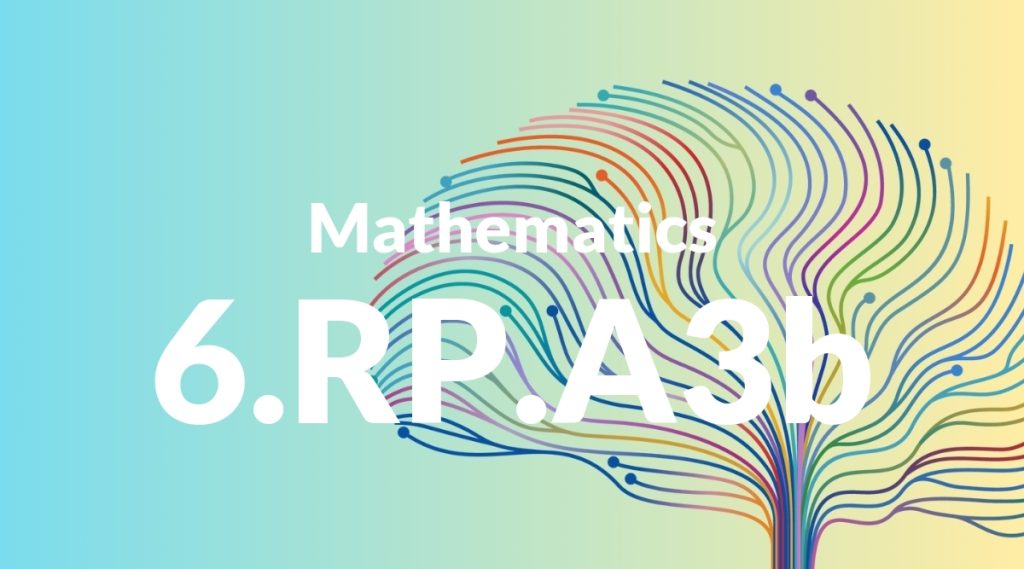Standard: 6.RP.A3b – Solve unit rate problems including those involving unit pricing and constant speed. For example, if it took 7 hours to mow 4 lawns, then at that rate, how many lawns could be mowed in 35 hours? At what rate were lawns being mowed?
Grade level: Grade 6
Subject: Mathematics
Domain: Ratios & Proportional Relationships
Teacher Overview
This standard focuses on solving unit rate problems, which is a critical skill in understanding ratios and proportional relationships. Mastery of this concept is essential for real-world applications like comparing prices and calculating speeds. Ensure students are comfortable with multiplication, division, and simplifying fractions. They should also understand basic ratio concepts.
Students will move on to more complex proportional reasoning, including scale drawings and linear equations, building a foundation for algebra.
Common Misconception 1
Some students may think that the total time or distance is the same as the unit rate. This is incorrect because the unit rate is a per-unit measure, not the overall total.
Intervention 1
Use visual aids such as graphs and tables to show the difference between total quantities and unit rates. Break down problems step-by-step to reinforce this distinction.
Common Misconception 2
Students might divide the wrong numbers to find the unit rate, leading to incorrect answers. This usually happens when they don’t clearly identify the quantities involved.
Intervention 2
Provide structured practice problems that highlight the importance of correctly identifying the quantities to divide. Use real-world scenarios to make the concept more relatable.
Prerequisite Knowledge
Students should have a basic understanding of multiplication, division, and fractions. They should also be familiar with the concept of ratios and how to simplify them.
Subsequent Knowledge
After mastering this standard, students will be able to apply unit rates to more complex problems involving proportional relationships, such as scale drawings and maps. They will also be prepared to tackle algebraic concepts involving linear equations and functions.
Instructional Activities
- Create a classroom store where students compare unit prices of different items.
- Organize a relay race and calculate the speed of each participant.
- Use project-based learning to plan a road trip, calculating total travel time and average speed.
- Analyze sports statistics to find unit rates, such as batting averages or running speeds.




